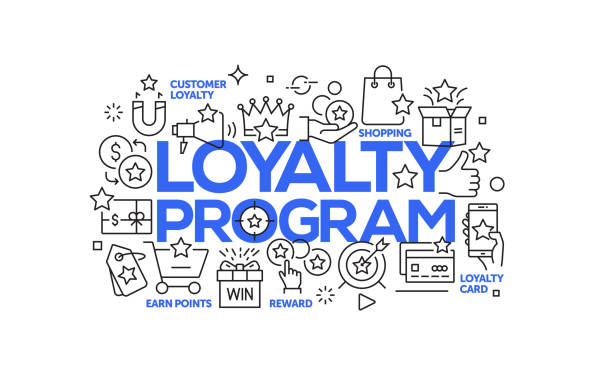In today’s hyper-competitive marketplace, brands are constantly seeking innovative ways to build long-term relationships with their customers. Traditional discounts and cashback programs are no longer enough. Consumers want experiences, personalization, and emotional connections with the brands they love. This shift has led to the rise of lifestyle loyalty programs—a modern evolution of the classic loyalty program model that goes beyond transactions to become an integral part of a customer’s lifestyle.
By aligning rewards and engagement strategies with the customer’s values, interests, and daily routines, lifestyle loyalty programs are helping brands stand out and retain customers like never before.
What Are Lifestyle Loyalty Programs?
Lifestyle loyalty programs are loyalty strategies that focus not just on transactional rewards, but on enriching a customer’s lifestyle. Instead of only offering points for purchases, these programs engage users through wellness goals, environmental sustainability, exclusive experiences, fitness tracking, travel perks, cultural events, and more.
Unlike traditional loyalty models that are mostly purchase-driven, lifestyle programs take a holistic approach—rewarding customers for actions, interests, and behaviors that reflect their daily lives and personal identities.
Why Lifestyle Loyalty Programs Matter
Loyalty is no longer just about convenience or price. Consumers, especially Millennials and Gen Z, seek brands that resonate with their personal values and goals. Here’s why lifestyle loyalty programs are gaining popularity:
1. Emotional Engagement
Lifestyle programs create deeper emotional connections with customers by recognizing and rewarding more than just spending.
2. Higher Retention Rates
When a brand becomes part of a consumer’s lifestyle, the likelihood of customer churn drops significantly.
3. Personalized Experiences
Modern loyalty program platforms leverage data to personalize offers based on interests, habits, and preferences.
4. Stronger Brand Advocacy
Happy, engaged customers become brand ambassadors, spreading the word organically through word-of-mouth and social media.
5. Differentiation in Saturated Markets
Brands that deliver lifestyle-based value stand out in markets flooded with generic discount-based loyalty schemes.
Key Elements of Effective Lifestyle Loyalty Programs
To truly connect with customers, successful lifestyle loyalty programs integrate several unique features:
- Holistic Rewards – Points or perks for non-purchase activities like workouts, recycling, social sharing, or attending events.
- Values Alignment – Tying rewards to causes the customer cares about (e.g., wellness, sustainability, culture).
- Experience-Driven Incentives – Access to VIP experiences, early product drops, curated travel offers, or local adventures.
- Omnichannel Accessibility – Seamless experience across app, web, in-store, and social platforms.
- Personalization Engines – Smart suggestions and offers based on behavioral and transactional data.
Leading Brands Using Lifestyle Loyalty Programs
Let’s look at some global and Indian brands that have redefined the loyalty program landscape through lifestyle integration:
1. Nike Membership (Nike+)
Nike’s program rewards users not only for purchases but also for physical activity. Through its app, users can track workouts, join running clubs, and get personalized coaching—all while earning exclusive access to product launches and experiences.
Why It Works:
- Deep integration with fitness
- Personalized content and perks
- Community-driven engagement
2. Tata Neu (India)
Tata Neu combines rewards across its massive ecosystem—spanning groceries, fashion, travel, electronics, and financial services. It taps into the Indian consumer lifestyle by linking everyday purchases with NeuCoins, which are redeemable across Tata brands.
Why It Works:
- Multibrand ecosystem
- Centralized loyalty wallet
- Cross-category engagement
3. Sephora Beauty Insider
More than just a point-based system, Sephora offers birthday gifts, exclusive events, free samples, and tailored content based on skincare and beauty preferences.
Why It Works:
- Personalization through AI
- Tiers with lifestyle-oriented perks
- Exclusive product previews
4. H&M Loyalty
H&M’s program rewards not only purchases but also eco-friendly actions like recycling old clothes. Members get early access to collections and invites to sustainability initiatives.
Why It Works:
- Green values alignment
- Lifestyle content and inspiration
- Simple, mobile-friendly access
5. Decathlon Membership (India)
Decathlon India rewards customers with sports experiences, club activities, and training content. It builds loyalty by becoming part of the customer’s fitness journey.
Why It Works:
- Community-led fitness
- Affordable gear tied to lifestyle
- Workshops and events
Lifestyle Loyalty Program Ideas by Industry
1. Fashion & Apparel
- Offer points for attending brand pop-ups or style webinars.
- Reward sustainable choices like eco-friendly purchases or recycling old garments.
2. Health & Wellness
- Integrate with fitness apps to track steps, workouts, or water intake.
- Offer wellness-based rewards like yoga retreats, spa coupons, or meditation guides.
3. Food & Beverage
- Invite members to exclusive tasting events or farm visits.
- Provide educational content on nutrition, cooking, and healthy lifestyles.
4. Travel & Hospitality
- Offer rewards for eco-conscious travel behaviors.
- Create travel communities that share tips, itineraries, and reviews.
5. Finance & FinTech
- Reward customers for financial literacy courses, saving milestones, or investment habits.
- Gamify financial wellness goals.
How to Build a Lifestyle Loyalty Program
Building an effective lifestyle loyalty program requires more than tech—it needs strategy and authenticity. Here’s how to get started:
1. Know Your Audience
Use customer data to understand what interests them beyond purchases. What causes do they care about? What inspires them?
2. Define Your Lifestyle Angle
Decide how your brand aligns with your customers’ lifestyle. Are you promoting wellness, sustainability, fashion, adventure, or digital innovation?
3. Choose the Right Platform
Use a loyalty program platform that supports personalization, omnichannel access, and analytics.
4. Integrate Emotionally
Your rewards should evoke excitement, pride, or a sense of belonging—not just monetary value.
5. Promote Consistently
Use all marketing channels to educate and remind customers about the program’s value.
Conclusion
In a world where brands are vying for attention, only those that embed themselves into the daily lives of their customers will thrive. Lifestyle loyalty programs go beyond transactional benefits to foster emotional connections, drive higher retention, and create lasting brand ambassadors.
As loyalty evolves from points to purpose, the brands that lead with empathy, innovation, and engagement will stand out. Whether you’re just beginning to build your loyalty program or looking to enhance an existing one, embracing a lifestyle-centric approach can redefine how customers perceive and interact with your brand—making loyalty a shared journey, not just a rewards system.
Recommended: Check out the best licensed money lender in Singapore.



